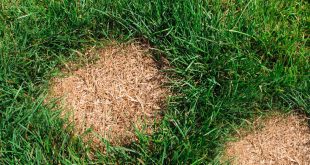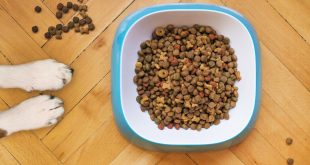This post may contain affiliate links. Please read our disclosure.
Have you ever wondered how dog food is made? Ever been curious about what goes into making the kibble and treats your pup loves so much? Taking a behind-the-scenes look at the process of producing pet food can be surprisingly fascinating. From selecting ingredients to packaging, learn more about this complex and engaging process in this article.
Article Contents
How is Dog Food Made?
Dog food is a surprisingly complex product that requires the right combination of ingredients, processing techniques and safety standards. At its core, dog food is made up of grains, proteins, vitamins and minerals – all essential components for a balanced canine diet. But to make sure these ingredients are safe and nutritious for your pet’s consumption they must go through rigorous processing steps.
The first step in making dog food involves selecting the base ingredients like cereal grains such as wheat or rice, meat proteins from sources like chicken or beef, vegetables and fruits for added nutrition and even animal by-products such as offal to provide certain nutrients not found in other sources. These raw materials then need to be cleaned, inspected and weighed before being blended together into a mix that meets specific nutritional requirements for different life stages of dogs e.g., puppies vs adult dogs.
Once blended together the mixture needs to be cooked under controlled temperatures depending on what kind of texture you want the final product to have (e.g., crunchy kibble versus canned wet food). During this stage additional preservatives may also be added – typically natural ones sourced from plants or animals – which help extend shelf life without compromising nutrition levels in any way. Finally after going through quality control tests it gets packaged ready for sale!
Ingredients of Dog Food
When it comes to the food we feed our furry friends, it’s important for us to understand what ingredients are being used. Knowing the contents of dog food can help us make sure that our canine companions get all the nutrition they need for a healthy and active life.
The first ingredient in most commercial brands of dog foods is some form of meat or fish protein such as chicken, beef, turkey, lamb or salmon. This provides essential amino acids which are necessary for muscle growth and development in young dogs and maintenance in adult dogs. The second ingredient is usually grains like corn, wheat or rice which provide carbohydrates and fiber needed for energy production and digestion. Other common ingredients include vegetables such as carrots and potatoes; fruits like apples; vitamins & minerals such as Vitamin A & E; fats like vegetable oil; preservatives such as BHA/BHT/ethoxyquin; flavor enhancers like MSG; artificial colors & flavors including carrageenan, ethylenediaminetetraacetic acid (EDTA), propylene glycol (PG) and sodium nitrite among others.
These components work together to create a balanced diet tailored specifically to meet your pup’s individual needs with regards to size, age activity level etc… It is important however when selecting a brand of dog food that you consider its quality before price because cheaper products may be made up using lower quality fillers that reduce nutritional value while also potentially containing harmful chemicals or additives not listed on their label!
Benefits and Risks of Feeding Dogs Commercial Diets
Commercial dog food can be a convenient and cost-effective way to feed our four-legged friends. But, like with any type of diet, there are benefits and drawbacks that should be taken into consideration before feeding commercial diets to your pup.
The Benefits: One of the biggest advantages of feeding dogs commercial diets is the convenience factor. It’s easy to find in stores or online, and it requires minimal effort for meal preparation—simply pour it into their bowl! Additionally, most brands have multiple flavor options available so you can easily switch things up if your pup gets bored with their meals. Furthermore, because these foods are specially formulated for canine nutrition needs by experts such as veterinarians and pet nutritionists, they provide balanced meals that meet all their dietary requirements.
The Risks: As convenient as this choice may seem on the surface however, there are also potential risks associated with relying solely on store-bought kibble as a long term solution for your furry friend’s nutritional needs. For starters, not all brands use high quality ingredients which means some products may contain fillers or artificial additives that could cause allergic reactions in some pets or lead to health issues down the line (e.g., obesity). Additionally since these foods don’t offer much variety in terms of nutrients (as opposed to homemade dishes), over time pups might develop nutrient deficiencies from an unbalanced diet leading them more prone to illness and disease later in life.
It’s important then when choosing what kind of food we give out pets that we take into account both its benefits and risks so we can make sure they’re getting a healthy meal without sacrificing convenience or affordability
Different Types of Dog Foods Available on the Market
When it comes to the health and wellbeing of our canine friends, we want to give them the best possible nutrition. Thankfully, there is now a whole range of different types of dog food available on the market – from grain-free options for pups with sensitivities to treat-like kibble that even picky eaters can’t resist!
Dry food is one of the most popular choices for many pet owners. It provides a well-balanced diet complete with all essential vitamins and minerals, as well as providing variety in flavor and texture. Dry food also has an added benefit – it helps keep teeth clean by reducing plaque build-up through regular chewing.
It’s important to be mindful when selecting dry dog foods though; look out for high quality ingredients like named meats or fish rather than ‘meat meal’ or ‘animal fat’ which often indicate lower grade products full of fillers and additives. Also make sure your pup is getting enough moisture – some brands are designed to have up to 90% water content so they don’t become dehydrated during meal times!
Canned foods are another great option if you’re looking for something more moist and flavorful than dry varieties provide. They usually contain higher levels of protein compared with dry alternatives, plus they tend to be easier on sensitive stomachs too since they don’t require much chewing effort before being swallowed (which can help reduce indigestion). Canned foods come in a wide varietya flavors including chicken & rice, beef & vegetable stew, salmon & sweet potato mash – just remember that these meals should always be served at room temperature or slightly above (not cold) so their natural aromas aren’t lost during heating processes conducted by manufacturers prior shipping them out !
• Dry Food: Provides balanced nutritional value + keeps teeth clean through regular chewing + look out for high quality ingredients + ensure adequate hydration levels
• Canned Foods: Higher protein levels + easier on digestive systems+ delicious variety of flavors+ serve at room temp/above
Nutritionally Balanced Diet for Dogs
A nutritionally balanced diet is essential for keeping your dog healthy and happy. A balanced diet should provide all the vitamins, minerals and proteins that a dog needs to grow, develop, maintain its energy levels and stay in top condition.
First of all, it’s important to consult with your veterinarian before starting any type of dietary change or supplementation. This will ensure you are providing your pup with the best possible nutrition for their individual health needs. Once you have consulted with a vet on what type of food would be best for them based on their breed, size, age and activity level you can start creating an ideal meal plan packed full of nutrients!
When selecting commercial or home-cooked meals for your furry friend make sure they are high in quality protein such as chicken or fish. These proteins should form the majority of their daily intake alongside fresh fruits and vegetables which will provide essential vitamins and minerals as well as dietary fiber. It’s also important to include complex carbohydrates such as sweet potatoes or brown rice into their daily meals as these help fuel up energy levels during playtime! Additionally adding some extra oils such as salmon oil can help boost Omega 3 fatty acids which promote healthy skin & coat while helping reduce inflammation caused by allergies & arthritis. Lastly don’t forget about treats; however these should only account for 10% of their total calorie intake per day so it’s important to keep track when giving out goodies during training sessions!
In conclusion having a nutritionally balanced diet helps keep our four-legged friends performing at optimal levels throughout each stage in life whether they’re puppies learning new tricks or senior dogs taking leisurely walks around the block – so make sure to give them plenty of love & nutritious snacks every day!
Impact of Unhealthy Diets on Dogs’ Health
When considering the health of our beloved pets, it is important to understand the impact that an unhealthy diet can have on their wellbeing. This is especially true when it comes to dogs as they are particularly prone to developing a range of illnesses and diseases due to poor nutrition.
The most common symptoms associated with an unhealthy diet in dogs include weight gain, lethargy and a decrease in energy levels. In extreme cases, this can lead to more severe problems such as diabetes or heart disease – both of which require immediate veterinary attention. Additionally, feeding your dog processed foods that contain high levels of sugar and carbohydrates can also leave them feeling bloated and uncomfortable; this could even cause them digestive issues over time if not addressed properly.
Therefore, it is essential for owners to ensure that their canine companions are eating well-balanced meals consisting mostly of fresh meat proteins alongside some low glycemic vegetables or fruits for additional vitamins and minerals. By providing healthy food options you will be helping your pet stay strong so they can live a happy life full of adventure!
Feeding Guidelines for Pet Owners
Feeding your pet is one of the most important aspects of responsible pet ownership. It can be a daunting task to determine the right amount and type of food for your furry family member, but by following these guidelines you can ensure that they remain healthy and happy.
When it comes to how much food your pet should eat, there are a few key considerations. First and foremost, consider their age: puppies need more frequent meals than adult dogs or cats; senior pets may require smaller portions spread out throughout the day. Secondly, think about size – larger breeds will naturally require more food than smaller ones; likewise an active breed like a husky will need more fuel than a lap-loving tabby! Finally, factor in any special medical requirements you’re aware of – if your pet has kidney issues for example they may benefit from certain types of low protein diets.
It’s also essential to pick the right kind of food for your beloved companion animal – not all brands are created equal! Aim for high quality foods with real meat as their first ingredient (not just ‘meat meal’). Look at labels carefully – avoid anything containing artificial preservatives or colorants which could be hazardous to health over time. Consider wet versus dry options too, depending on what best suits both you and your four-legged friend’s lifestyle – some pets prefer moist kibble while others enjoy crunchy biscuits now and again! Allergies can also play a role here so make sure you monitor reactions closely when introducing new foods into their diet.
Finally remember that every individual is unique so don’t feel obliged to stick strictly to feeding guides on packets – do what works best for both you and them based on personal preference and dietary needs. With these tips in mind you’ll have no trouble ensuring that Fido or Fifi gets all the sustenance they need!
Wrap up!
In conclusion, it is important to be aware of the different types of dog food available on the market and how they are made. It is also essential for pet owners to understand what ingredients are used in commercial diets as well as their potential benefits and risks. A nutritionally balanced diet should be fed to dogs according to age, size, activity level and specific health issues. Finally, it is important to be mindful that an unhealthy diet can have a negative impact on your dog’s health so following proper feeding guidelines can help keep them happy and healthy.
FAQ
how is dog food is made?
Dog food is typically made from a combination of proteins, fats, carbohydrates, vitamins and minerals. The exact ingredients and ratios depend on the type of dog food being produced as well as what benefits it’s intended to provide for your pet.
what are the best sources of protein for my dog?
Some great sources of protein that you can offer your pup include lean meats such as chicken, beef or fish; eggs; dairy products such as yogurt or cottage cheese; beans; nuts like almonds and peanuts; grains like rice or quinoa; and even certain vegetables like peas.
are there any risks associated with feeding my dog human foods?
Yes, some human foods can be toxic to dogs if consumed in large quantities. Foods such as chocolate, onions, garlic, grapes/raisins and raw yeast dough should all be avoided when feeding your pup meals at home. Additionally, many processed snacks are very high in salt which could cause digestive upset or other health issues if fed too often.
what should i look for when selecting a good quality dog food?
When selecting a quality brand of dog food for your canine companion look for an option that lists meat (not by-products) first on its ingredient list – this indicates that the product contains more real animal protein than fillers like cornmeal or soybeans products. Also make sure to check the guaranteed analysis panel: look for brands with higher amounts of crude fat (at least 18%), crude fiber (no more than 5%)and moisture content no greater than 10%.
how do i know how much food to feed my pup each day?
The amount you feed your pup will depend on their age, size breed type and activity level – consult with your vet about what would be most appropriate given these factors so you can ensure they’re getting all the nutrition they need each day!
 Petnile Comprehensive Pet Care Guides
Petnile Comprehensive Pet Care Guides



